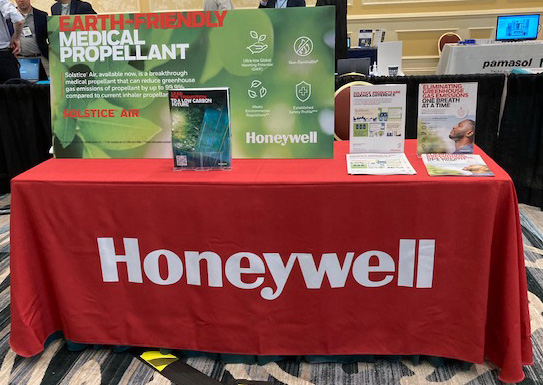Asking whether companies can afford to make a switch and whether they should give up on the MDI, he noted that not all patients can use DPIs; DPIs are not recommended as reliever medications; reliever DPIs are significantly more expensive than MDIs in many countries, and some countries don’t even have DPI versions of those medications. He added that as the price of existing propellants rise during a transition, he wonders whether companies in developing countries that are allowed to delay implementation of new regulations may continue to make MDIs using older propellants and seek to sell them in the West.
Reviewing the possible alternative propellants, Pritchard asserted that only HFA 152a and HFO 1234ze are viable possibilities. He noted possible drawbacks with each, such as the flammability of 152a and the theory that 1234ze could decay to HFC 23, which has a high global warming potential. Although he acknowledged a lack of evidence that regulators will accept either propellant, he said that he was optimistic.
Responding to a question from Paul Atkins, also a member of the UN committee, asking whether he thought health authorities understood the issues involved, Pritchard responded, “I don’t think they do.” No regulators presented their perspectives regarding potential new propellants at RDD 2022.
Pointing out that several companies, including Chiesi and AstraZeneca, have already announced plans to transition to these lower-GWP propellants, he stated, “I don’t think it helps the industry to be silent” and encouraged other companies to announce their plans for the transition.
In response to a comment from Vectura Chief Scientific Officer Geraldine Venthoye, who emphasized that mid-size companies have greater challenges than large pharmas like Chiesi and AstraZeneca and that there is no business case for going it alone, Pritchard acknowledged that this transition, unlike the transition from CFCs, is being driven by propellant manufacturers instead of industry groups.
Pritchard deferred to Maureen Hardwick of the International Pharmaceutical Aerosol Consortium (IPAC) on the question of industry leadership. In her talk during the Project Green MDI session, Hardwick asserted that a “multi-stakeholder approach is essential for success.” The remaining speakers in that session addressed technical considerations involved with the potential use of HFA 152a and HFO 1234ze, including an account of the toxicity testing of 152a from Phil Kuehl of Lovelace Biomedical. According to Kuehl, a Phase 1 study of HFA 152a inhaled from an MDI showed no adverse events at all, no effect on pulmonary function, rapid clearance, and minimal taste effect. A DMF is on the way, he said.
Honeywell’s Ryan Hulse reported that toxicity testing of 1234ze, which Honeywell will market as “Solstice Air,” is ongoing, with results from a 2-year carcinogenicity study in rats due in 2024. While noting that he is not a toxicologist, he said that the FDA has reviewed toxicity studies completed so far and a Phase 1 trial demonstrated that HFO-1234ze in a budesonide / glycopyrronium / formoterol fumarate MDI produced similar results to an HFA 134a MDI. According to Hulse, the solubility of common APIs in Solstice Air is similar to 134a, and Solstice Air is “a near drop-in for multiple 134a applications.”



